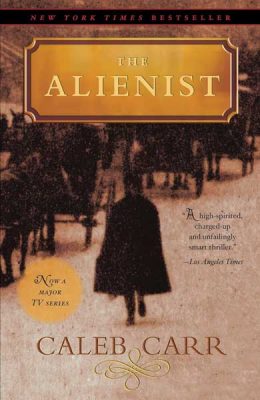Three Decades Ago, the Great Caleb Carr Delivered a New York Masterpiece
Review An assessment or critique of a service, product, or creative endeavor such as art, literature or a performance.
By Michael Malone
 It was 30 years ago that a novel about a serial killer in late 1800s Manhattan landed.
It was 30 years ago that a novel about a serial killer in late 1800s Manhattan landed.
“The Alienist” told the story of Dr. Laszlo Kreizler, a child psychologist, or “alienist,” in the parlance of the times, teaming up with New York Times police reporter John Schuyler Moore to create a profile of the killer and find him before he killed the next young male prostitute.
Caleb Carr wrote the book, and it was a smash.
Why am I writing about “The Alienist” 30 years after its release? Because the novel is fabulous, yes. And because we lost Carr, at 68, late last month.
The violence in “The Alienist” is chilling, and Carr, as a boy, suffered beatings from his father as he was growing up in the East Village or, as East 14th Street was known at the time, the Lower East Side. Lucien Carr was tight with the likes of Jack Kerouac, William S. Burroughs and Allen Ginsberg. Caleb’s obituary said Lucien was abused by his Boy Scout leader as a child, and later murdered the man in New York, stabbing him with his Boy Scout knife and rolling him into the Hudson, with Kerouac helping dispose of the knife.
Lucien did prison time.
“There’s no question that I have a lifelong fascination with violence,” Caleb Carr told New York Magazine just before “The Alienist” came out.
Carr, 39 when the book came out, delivered a picture-perfect snapshot of life in lower Manhattan at the time. From sumptuous meals at Delmonico’s, to the tenements, slums and gangs and a few real-life celebs, such as new police commissioner Teddy Roosevelt and rich guy J.P. Morgan, “The Alienist” is like all of the tabloid newspapers from 1896, tossed into a blender.
“Delancey Street carried us past the shuttered stalls of fruit and clothing merchants and on into one of the worst of the Lower East Side’s tenement- and shanty-strewn ghettos, the neighborhood near the waterfront just above Corlears Hook,” Carr writes. “A vast, maudlin sea of small shacks and shoddy new tenements stretched away to either side of us. The area was a stewpot of different immigrant cultures and languages…”
I was living in Manhattan when I read it – not far from where the book’s action occurs – and definitely remember that enhancing my engagement with the novel; walking around, seeing where parts of the book took place. Such as 808 Broadway, where John, Dr. Kreizler and their investigative cronies would meet, a few blocks from the subway I took to work, the book in my backpack.
I also liked that Carr had a major female character in a role one might not expect to see one. Sara Howard was a secretary in the police department, and had ambitions of being a detective.
Laszlo, Sara and John start piecing things together. The murders all seem to happen near a river. The victims’ eyes are gouged out. They wonder what might’ve happened to the killer, as a child, to provoke such awful violence. They wonder how that information might help them find him.
The book has nearly 500 pages and it is dark. Nearly 174,000 readers on GoodReads gave “The Alienist” a 4.06 out of 5.
A 1994 review in The New York Times said, “You can practically hear the clip-clop of horses’ hooves echoing down old Broadway in Caleb Carr’s richly atmospheric new crime thriller, ‘The Alienist,’ set in 19th-century New York City. You can taste the good food at Delmonico’s. You can smell the fear in the air.”
Carr sold the movie rights not long after the book was published. No movie came, but there was a two-season TV series on TNT, with Daniel Bruhl as Dr. Kreizler, Luke Evans as John Moore and Dakota Fanning as Sara Howard. You can watch it on Max.
Carr ended up writing 11 books, including a 1997 sequel, “The Angel of Darkness.” Those also include the Sherlock Holmes mystery “The Italian Secretary,” a book about the September 11 attacks called “Lessons of Terror: A History of Warfare Against Civilians” and a memoir released this year, “My Beloved Monster: Masha, the Half-Wild Rescue Cat Who Rescued Me.”
But nothing landed with anywhere near the same kind of punch that “The Alienist” did.
I’ll leave you with a bit more Carr prose. When John Moore finds a new murder victim, it brings him back to the first one he found: “That same terrible sense of pathos that I’d felt on the Williamsburg Bridge anchor – prompted not only by the age of the victim but as well by the cruel way in which the body was trussed and pushed to the ground – returned to steal my breath and rattle what seemed every bone in my body.”
Journalist Michael Malone lives in Hawthorne with his wife and two children.

Examiner Media – Keeping you informed with professionally-reported local news, features, and sports coverage.
